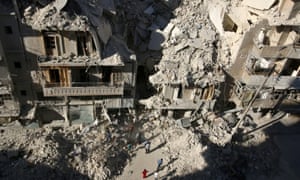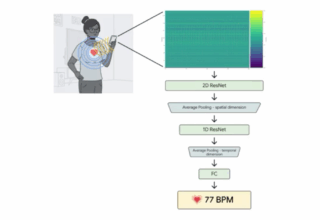
As the most intensive air bombardment of the war has rained down on opposition-held east Aleppo this week, an army of some 6,000 pro-government fighters has gathered on its outskirts for what they plan will be an imminent, decisive advance.
Among those poised to attack are hundreds of Syrian troops who have eyed the city from distant fixed positions since it was seized by Syrian rebels in mid-2012.
But in far greater numbers are an estimated 5,000 foreign fighters who will play a defining role in the battle – and take a lead stake in what emerges from the ruins.
The coming showdown for Aleppo is a culmination of plans made far from the warrooms of Damascus. Shia Islamic fighters have converged on the area from Iraq, Iran, Lebanon and Afghanistan to prepare for a clash that they see as a pre-ordained holy war that will determine the future of the region.
For the past four years, Syrian leader Bashar al-Assad and his regime have insisted that his forces were capable of shaping the battle for Aleppo and that the confrontation would be fought along nationalist lines. But with the battle now imminent, the remnants of Assad’s army have been relegated to a supporting role.
On social media accounts, and in interviews, leaders of the Shia groups speak in strident sectarian tones about the looming battle, which they bill as part of the same struggle to orientate power in Iraq and Lebanon.
Commanders gathered near Aleppo include battle-hardened devotees of Iran’s supreme leader, Ayatollah Ali Khamenei, with close to a decade of experience fighting in Iraq against both US troops and Sunni militants, including the Islamic State (Isis).
One of the most prominent of those leaders is Akram al-Kaabi, from the Iraqi militia Keta’ib Hezbollah, who arrived in Aleppo last weekend. Surrounded by Shia iconography in the town of al-’Ais, near Aleppo, he praised his followers’ willingness to fight far from home and described them as part of an “army of resistance” defending the Shia faith from usurpers.
“Why are you going to Syria? Because we are in the axis of resistance, and the axis of resistance has many battles all over the world,” al-Kaabi said. “If we had to go to the farthest point of the world, we would go.”
In a speech to his fighters which was filmed and shared on social media, al-Kaabi said: “Youth like you are conducting jihad inside Iraq and outside Iraq, your path of jihad is blessed.”
Invoking centuries-old grievances between Sunnis and Shias, he compared Assad’s opponents in Aleppo to figures from the founding days of Islam who killed the grandson of the Prophet Muhammad at the battle of Karbala in 680 AD.
“We are facing monsters, the grandsons of Yazid and Muawiyah, and the grandsons of those who carried out the Karbala massacres – and today they want to repeat them.”
Muawiya and Yazid are still despised by the Shia for undermining attempts by Muhammad’s son-in-law Ali to lead an early Islamic caliphate.
All around the edges of Aleppo, yellow and green Shia flags flutter in the wind. Banners commemorating fallen fighters – some from Lebanon’s Hezbollah and more from the Iraqi groups – have been hung from homes and lamp posts.
The religious iconography is viewed by the opposition as a claim on the area, which in recent centuries has been home to mostly Sunni communities.
“Iran has been there a long time,” said Sobhi Zeitun, an opposition fighter who fled Aleppo for Turkey in May. “We could hear them on the radio for a long time. They taunted and mocked. They said they were going to kill us in the name of Ali. This is the face of Bashar, a man who hands over the country to sectarian groups, because he can’t defend it himself.”
As the air attacks on Aleppo intensified this week, a senior Iranian general acknowledged that forces he commands had given targets to the Russian air force
“Many victories, such as the one in Aleppo, could not have been achieved only by air and without the involvement of ground forces,” said Major General Yahya Rahim Safavi, a senior advisor to Iran’s Revolutionary Guards. “The Russian aerial support has been effective but ground forces had been supplying them with information about the location of terrorists.”
Together with Syrian planes, Russian jets are believed to have dropped more than 1,700 bombs on east Aleppo since the start of the week. Some of the bombs have been bunker busting explosives that Save The Children said have forced the closure of schools that had been moved underground to protect students from near constant attacks.
The strikes destroyed two more hospitals on Wednesday, taking to more than 40 the number of hospitals and medical clinics that had been destroyed and damaged in east Aleppo since the Russian intervention to support the Syrian leader one year ago.
Mohammed Sheikh, a resident of East Aleppo, fled the fighting in the city earlier this year. He said that the battle for the city was being fought along sectarian lines but said only one side – the Sunnis – were being labelled as sectarian. “There are hardline people among us [the opposition]. We admit that and we are scared of them. But you should all be scared about what comes next. You should all face what is happening. If this continues to be about one sect fighting the other, this will be a war that will destroy civilisation.”
[Source:- The Gurdian]



















